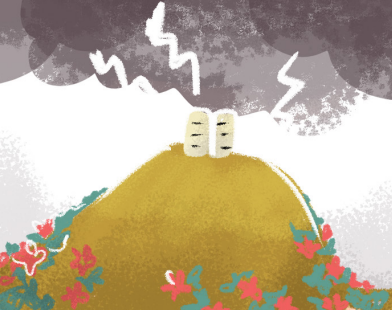
The Calendar עִנְיְנֵי דְּיוֹמָא
The Torah’s name for the holiday on the tenth day of Tishrei is יוֹם הַכִּפֻּרִים (Yom haKippurim, the Day of Atonement). We call it Yom Kippur for short.
…יוֹם כִּפֻּרִים הוּא לְכַפֵּר עֲלֵיכֶם לִפְנֵי יהוה אֱלֹהֵיכֶם:
…It is a Day of Atonement to atone for you before the Lord your God.
“Atonement” means forgiveness. But why is the tenth day of Tishrei a good day for us to get forgiveness from God?
It all goes back to the חֵטְא הָעֵגֶל (het ha-eigel, sin of the golden calf). God saved Benei Yisrael from Egypt and then gave them the Torah. But right after that, they built a golden calf and began worshiping it. Moshe smashed the לֻחוֹת (luhot, tablets), and God wanted to destroy Benei Yisrael. But Moshe begged for them to be forgiven. When did all this happen? Rashi (in his comments to Devarim 9:18) explains the dates:
- 17 Tammuz
He saw Benei Yisrael worshiping the eigel.
He broke the luhot.
- 18 Tammuz
- 29 Av
- 10 Tishrei (Yom Kippur)
The people were forgiven.
- How does it change your understanding of Yom Kippur to know that it’s the day we were forgiven for one of the worst sins in the Torah?
- According to this, Yom Kippur was also the day we finally got the luhot to keep! What does receiving the Torah have to do with atonement?

-------------------
Click here to return to the Table of Contents for Yom Kippur from Devash
-------------------
Click here to return to the Table of Contents for Yom Kippur from Devash
-------------------





